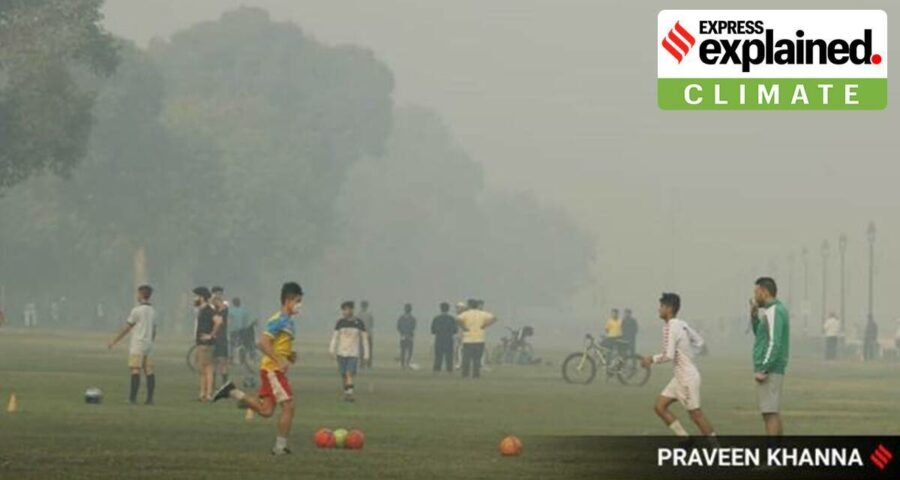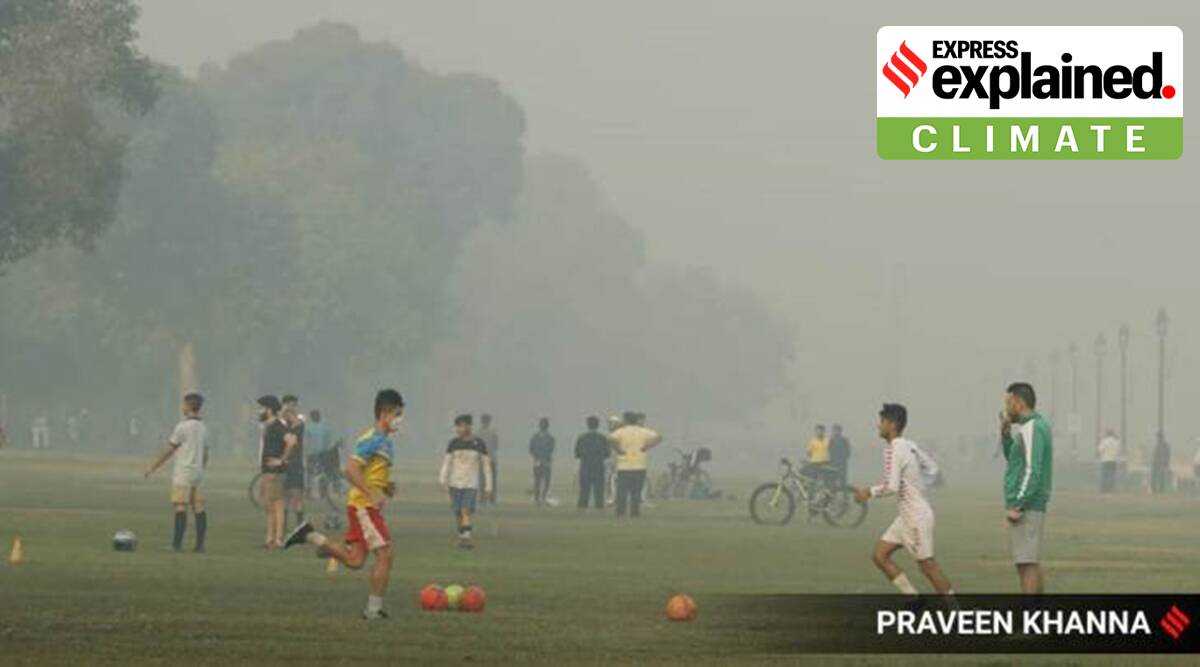India has 37 of the world’s 50 most polluted cities, despite its air quality standards being more lax.
In updating its already strict air quality guidelines (AQGs), the WHO last month sent out a stark message: that the impact of poor air quality on public health is at least twice as bad as previously estimated. India has 37 of the world’s 50 most polluted cities, despite its air quality standards being more lax. For instance, its standards for PM2.5 and PM10 are 60 and 100 µg/m3 respectively (over 24 hours), while the WHO’s new standards are 15 and 45 µg/m3 (over 24 hours).
Not surprisingly, India’s air pollution-influenced mortality rates are among the worst. The Global Burden of Disease estimates that India lost 1.67 million lives in 2019 directly as a result of breathing polluted air, or because of pre-existing conditions exacerbated by air pollution. Uttar Pradesh had the biggest share at 3.4 lakh, Maharashtra had 1.3 lakh, and Rajasthan 1.1 lakh.
The average life expectancy in Delhi is 6.4 years lower than the national average of 69.4, and the number is starting to fall for even coastal cities like Mumbai and Chennai. Globally, it is estimated that exposure to PM2.5 kills 3.3 million people every year, most of them in Asia.
India’s predicament
The problem is, our economic growth is built on fossil fuels. Coal, oil, and natural gas account for roughly 75% of our power generation and >97% of road transport, but they come at the cost of heavy CO, SO2, NO2, ozone, and particulate matter emissions. And herein lies the predicament: India prides itself on being the fastest growing large economy, and changing the way we generate power and clamping down on petrol and diesel vehicles is seen as throttling economic progress. Yet at the same time, the ever-growing need for energy and personal vehicles is worsening the public health crisis. There is now almost a sense among people that toxic air is just a part of life in the city.
The killer threat
It is difficult to overstate the seriousness of the situation. The health impacts of PM2.5 exposure now include lung cancer, cerebrovascular disease, ischaemic heart disease and acute lower respiratory illness, besides exacerbating ailments like depression. Exposure to ozone has been linked to chronic obstructive pulmonary disease (COPD). Prolonged exposure to air pollutants affects newborns and babies still in the womb. While mothers may have to deal with the trauma of premature deliveries and stillbirths, foetuses face increased risk of being born with lungs that are not yet developed to function properly, and congenital defects that can impact the rest of their lives. Simply put, air pollution is a threat to generations even before they are born.
Losses to economy
A 2019 study found that India’s horrendous air quality erased 3% of its GDP for the year and caused a loss of nearly Rs 7 lakh crore (~USD 95 billion). Most of the loss was due to employees failing to show up at work, far fewer people stepping out to buy goods, and foreign tourists staying away after health warnings. Official figures indicate a loss of 820,000 jobs in the tourism industry and 64% of businesses squarely blame air pollution.
Poor air quality was found to offset 67% of the cost advantage of using solar panels over grid power, as ground-level smog and the particulate matter chokes their power output. Also, several studies have noted a 25% drop in crop yield for wheat and rice after prolonged exposure to PM and ozone.
Way forward
It’s a crisis that affects everyone. What India needs to do without delay is to revisit its National Ambient Air Quality Standards, revise them down to WHO levels, and implement them without exception. Unfortunately, the new WHO guidelines are not legally binding, so a critical first step is to conduct nationwide epidemiological studies and gather expansive raw health data on air pollution as a risk factor. Without this it would be difficult to get a picture of just how many Indians, regardless of age, gender and occupation, are suffering under bad air, and would render efforts to tackle the problem meaningless.
Most importantly, the authorities must acknowledge that Indians are no less susceptible to air pollution — so to continue with laxer standards for the sake of industry places a life-threatening burden on the average resident.
The China example
China went through a similar phase. In transforming itself as the world’s manufacturing hub, its cities were subjected to manic air pollution and Beijing was notorious for its smog. But it has had success in tackling the issue, even though after 10 years it is still not WHO-compliant. It has prioritised zero-emissions transport, staggered the use of internal combustion engine vehicles, and enforced a strict clampdown on point sources of pollution that allows for few exceptions, if at all. What’s most impressive is that the country is now the largest market for electric vehicles and clean energy, its per capita incomes have never been higher, and its influence as an economic powerhouse is still on the rise. It refutes the myth that clamping down on air pollution stymies economic growth.
Cleaner energy
India’s National Clean Air Programme (NCAP) attempts to incorporate such solutions, but e-mobility and clean energy in India are not yet dominant in their respective sectors. The good news is states like Gujarat, Maharashtra, and Telangana have introduced policies to speed up their market shares, and EVs’ year-on-year sales are posting record figures.
The share of renewable energy has also risen dramatically since 2015 to cross 100 GW in August 2021, which is almost a quarter of the country’s installed power capacity. But there is a long way to go still.
Better monitoring
Another equally essential step is to expand the country’s air quality monitoring network. The CPCB-controlled CAAQMS monitors are expensive — each costs upward of Rs 20 lakh — and there are only 312 of them spread across 156 cities. This leaves many urban and rural pockets unmonitored to understand the full extent of their air pollution.
Fortunately a number of new, low-cost monitors have entered service, that capture readings for not only PM2.5 and 10 but also gases like NO2, SO2, methane, and secondary volatile organic compounds. Still, the Centre and state governments must boost the density of the CAAQMS network to fully inform the science behind the corrective measures, and all of this needs to happen on priority. Given the scale of our public health crisis, wasting any more time could very well lead to a public health emergency.
Source: Read Full Article



